Updated: 09-Sep-2023
Rover has always been a company whose main mission has been the manufacture of automobiles, with classic engines, including Wankel.
-Its role as an aircraft engine builder was due to the conversion of a part of its factory to assist in the war effort during WWII.
-Frank Whittle's manufacturing of Power Jets engines was therefore assigned to Rover (see both). It is also recorded that it made the Bristol Hercules B.
-It can be considered a pioneer since it was at the beginning of the development of gas turbines for aviation. Rover received the ministerial commission to build the W2B for the Meteor and improving this engine in a new version, the W2/23. (see Rolls-Royce also and as RB.23).
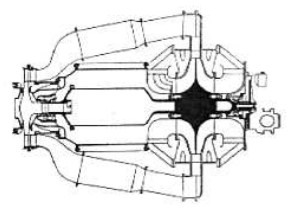
“Rover W2/26 and W2Y”
-Rover made a version on its own with the chambers directed towards the turbine directly, the W2/26 and W2Y, which when transferred to Rolls-Royce would give rise to the Derwent as a result. (RN.26 and RB.37).
-The W2/23 at Rolls-Royce, after refinements it became the Welland.
-With this gained experience, Rover applied turbines to automobiles and military vehicles, including tanks.
-In 1950 it presented the “Whizzer Jet I”, a car that reached the speed record in 1952, 244 km/hr on the highway from Ostend to Ghent.

“Rover T-4”
-In 1956 there was the T-3 car followed by the T-4.
-The history of Rover and the turbines applied to motor sports went further as they participated in English championships, like with a Rover on BRM chassis.

“Rover.BRM”
-They took part in Le Mans in 1963, out of classification but winning at more than 172 km/hr. on average.
-This new experience would be applied to small-power aviation turboprop engines such as the 60/70 HP TP-60.
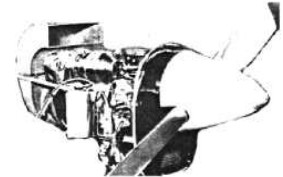
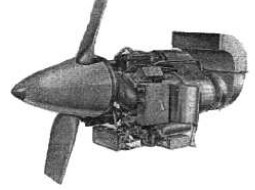
“Views of two TP-60”
-The TP-60 gave 60 HP at 46,000 turbine rpm. It could use gasoline or kerosene indifferently. It had an industrial version, the IS-60, with a life between revisions of 3,000 Hrs.

“Rover TP-90”
-The TP-90, with 115 HP, was next, and it was also planned for small light aircraft. This was in 1960.
-The TJ-125 turbojets are mentioned in Rover, but rather it is a collaboration with Alvis, so we have the Alvis-Rover TJ-125. Of 51.7 Kgf of thrust in the "Epervier X4" glider. The engine was called "Minijet".
-There was a list of auxiliary power groups, known as Rover and later seen in Rols-Royce:
-The “Ryton” 75 HP turboshaft.
-The "Wolston" in many variants, such as the 1S/60, 1S/80, 1S/90, 4S/75 or the 2S/150.
-They were all APUs, so the 1S/60, 60 SHP was installed on a light biplane, the Cunnie Wot, as an experiment.
-From the Wolston 2S/150 would come the “Marton”, an air compressor.
-The “Moreton” was a turbojet derived from the Wolston.
-Finally, around 1970 it was dedicated to the construction of auxiliary plants such as 748 and 801 shown below:
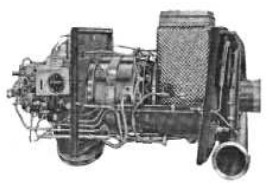
“Rover 748”
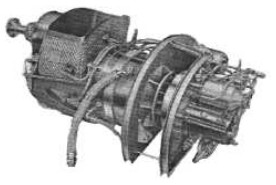
“Rover 801”
-We obtained a photograph of the W2B engine with a parallel reference of “B.23 Gyrone”.
-Basically designed by Frank Whittle (see) and his colleagues at Power Jets (see), it was manufactured, developed and produced by the Rover Motor Company, although it later passed to Rolls-Royce (see), where it received the name Welland.
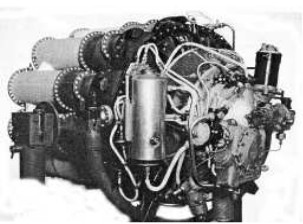
“Rover W2B”
From Appendix 6: In the USA, a 60 HP Rover IS-90 turboprop turbine was mounted on the small Everage aircraft.
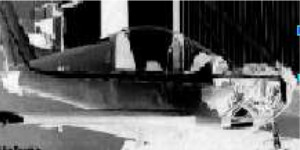
“Photo of the Everage in Aerofiles” (PiP)
-The Rover engine shown below was shown at the SBAC (Aviation Equipment Manufacturers) Exhibition in 1954.
-It was for use on land and on board. It had a centrifugal compressor and a single-stage axial turbine. And as we see, starting could be done with a crank.
-The unique combustion chamber is evident above the unit. It gave 60 HP to the power shaft.
-The fuel control unit was a Plessey-Lucas.

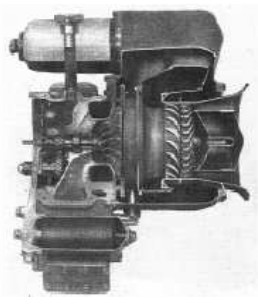
“The Auxiliary Power Rover”
-Another onboard Rover auxiliary power unit with a three-phase Rotax alternator.
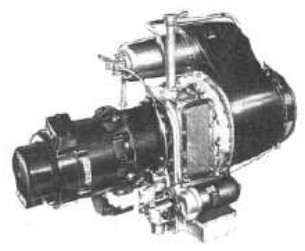
“Rover APU”
-The Rover TP/70 light turboprop is now provided in a cross-section drawing, marking the internal gas flows.

“Rover TP/70 cross-section”
-The 2S/150 auxiliary turbine mentioned in the main text now appears in the 2S/150A version, used as on-board APU (APP).
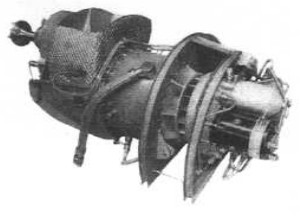
“Rover 2S/150A”
-The commercial name of this auxiliary turbine was “Wolston” (see main text) and later the Type 801 would be a derivative of it.
-It was used in tests as a turboprop in a DHC Chipmunk, in a 1S/60 version with gearbox and giving 100 HP.
-We have also obtained a photo of the “Marton”. We see the similarity with the previous one. It gave 146 HP.
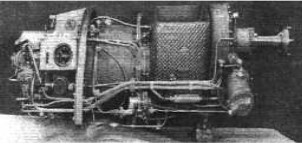
“Rover Marton”
-In 1966, while announcing “Moreton”, Rover also announced the unknown “Ryton” and “Napton”.
-Rover Gas Turbines was acquired at that time by Alvis Ltd, so it became part of the Leyland Motor Corp. (British Leyland).
From Appendix 6: The Rover Gas Turbine Limited. From this brand we have located the auxiliary on-board group model 1S/60 that is mentioned in the main text.
-They were from the “Wolston” series. (see 2S/150 also).
-This one specifically was installed on board the Vulcan (Force V) bombers of the RAF.
-Compact and lightweight with an easy one-button start, it could be started repeatedly over the entire altitude range from 0 to 45,000 feet. and temperatures from -26º to +50º C.
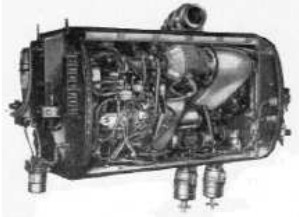
“APU Rover 1S/60”
From Appendix 9: At a certain time this manufacturer of the famous off-road vehicles, and previously of high class automobiles, applied turbines to their cars as proof of their possibilities.
-Naturally, it made Frank Whittle's engines in its initial phase until BTH and finally Rolls Royce took over.
-But it is also a manufacturer of turbine auxiliary equipment using its IS series engines, e.g.

“Rover IS-60 and IS-90 series”
-Now we see the gas circulation flowing through this engine with a single combustion chamber.
-The compressor is centrifugal and the single-stage turbine is axial.
-The reduction gear box supports all the necessary accessories of the engine itself and also that of the generator that it drives to provide service.
-This box, in its lower part, acts as an oil tank for this entire area and as we see in this illustration there is a glass viewer to check the level.
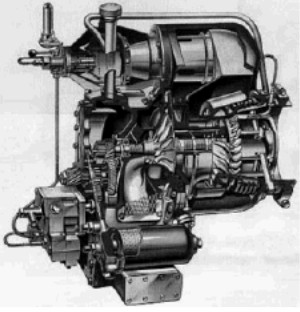
“Artistic impression of the same engine”
ro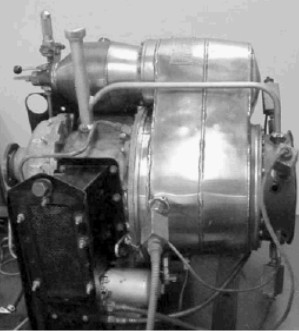
“And real outer appearance of the Rover”
From Appendix 12: There was also a Rover car engine that was converted for aviation, a V-8 with 3,500 cc of displacement.
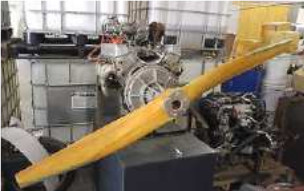
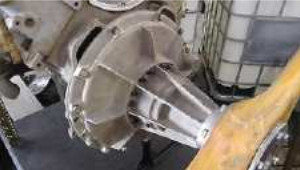
“The motor with propeller and direct transmission”
-As we see, the transmission for the propeller is mounted on the flywheel side.
Engines of ROVER
Model: 2S-150, -A (Wolston)
Arquitecture:
Compressor/s:
Combustion chambers:
Turbines:
Power / Thrust: / ---
Weight:
Model: 748
Arquitecture:
Compressor/s:
Combustion chambers:
Turbines:
Power / Thrust: / ---
Weight:
Model: 801
Arquitecture:
Compressor/s:
Combustion chambers:
Turbines:
Power / Thrust: / ---
Weight:
Model: IS-60
Arquitecture:
Compressor/s:
Combustion chambers:
Turbines:
Power / Thrust: / ---
Weight:
Model: IS-90
Arquitecture:
Compressor/s:
Combustion chambers:
Turbines:
Power / Thrust: / ---
Weight:
Model: Marton
Arquitecture:
Compressor/s:
Combustion chambers:
Turbines:
Power / Thrust: / ---
Weight:
Model: Moreton
Arquitecture:
Cooling:
Total Displacement:
Bore / Stroke: x
Power:
Weight:
Model: Ryton
Arquitecture:
Cooling:
Total Displacement:
Bore / Stroke: x
Power:
Weight:
Model: TP-60
Arquitecture:
Compressor/s:
Combustion chambers:
Turbines:
Power / Thrust:
Weight:
Model: TP-70
Arquitecture:
Compressor/s:
Combustion chambers:
Turbines:
Power / Thrust:
Weight:
Model: TP-90
Arquitecture:
Compressor/s:
Combustion chambers:
Turbines:
Power / Thrust:
Weight:
Model: V-8, 3-5
Arquitecture:
Cooling:
Total Displacement:
Bore / Stroke: x
Power:
Weight:
Model: W2/23
Arquitecture:
Compressor/s:
Combustion chambers:
Turbines:
Power / Thrust:
Weight:
Model: W2/26
Arquitecture:
Compressor/s:
Combustion chambers:
Turbines:
Power / Thrust:
Weight:
Model: W2B (B.23 Gyrone)
Arquitecture:
Compressor/s:
Combustion chambers:
Turbines:
Power / Thrust:
Weight:
Model: W2Y
Arquitecture:
Compressor/s:
Combustion chambers:
Turbines:
Power / Thrust:
Weight:


